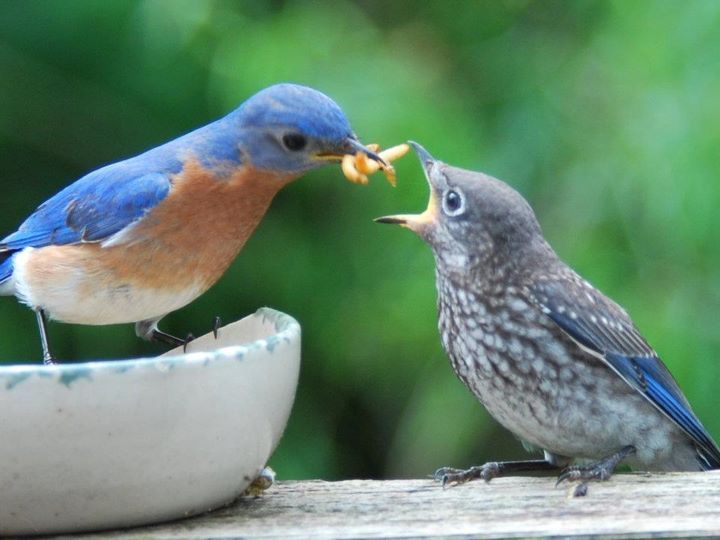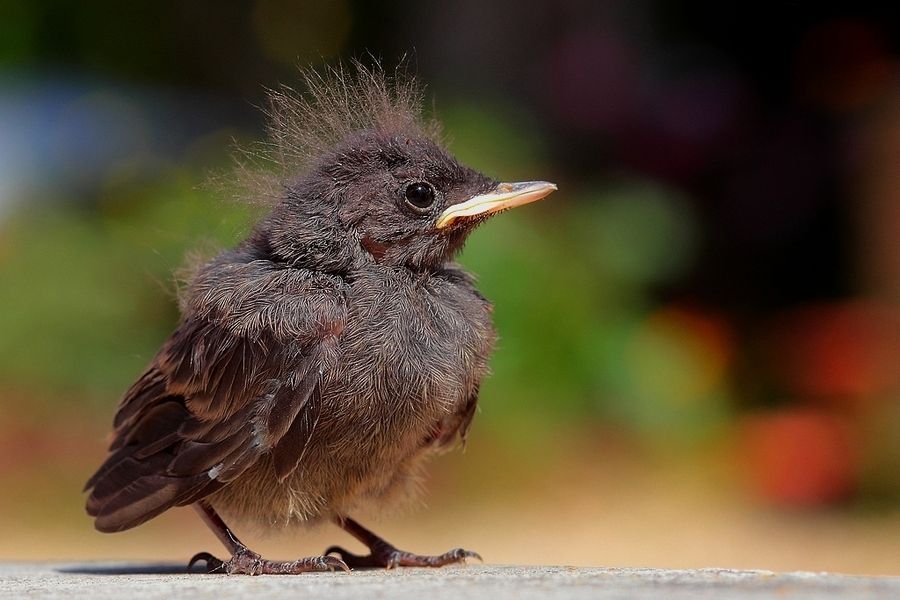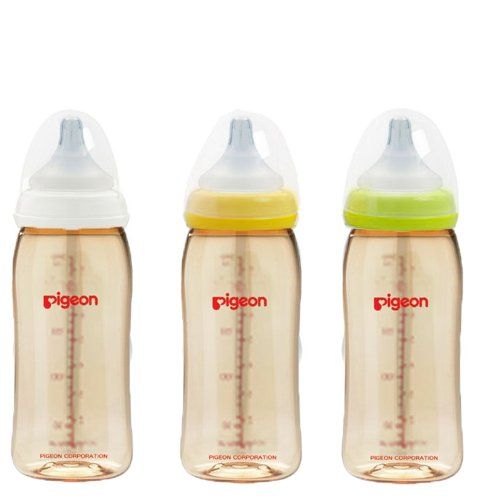Feeding a baby blackbird
How to Teach Fledgling Blackbirds to Eat
By Deborah Whistler | Updated September 26, 2017Things You'll Need
Dry dog food
Meal worms
Earth Worms
Large cage
Perches
Tweezers
Food and water bowls
Millet spray
Popcorn
Bread crumbs
Outdoor light
Fledgling blackbirds can require care if they can’t fly and are abandoned by their parents. Before you rescue a fledgling bird, be sure it is indeed in need of help. Stand back and keep an eye on the baby bird to see if the parents return to feed it. Often, a fledgling is just having difficulty learning to fly and its parents will continue to care for it when it’s out of the nest. Caring for a baby bird is a full-time job and often not a successful undertaking. Being handled by humans is extremely stressful for baby birds and they require feeding every half hour or so during daylight hours to survive. If the parents don’t show, you can try certain measures to help the fledgling and get it to eat until it can fly and be released.
Place the fledgling blackbird in a large cage with perches. The baby is learning to fly and can damage its wings and injure itself if confined in too small a cage. The cage should be large enough for the bird to practice flying without hitting its wings on the sides of the cage. Line the bottom of the cage with newspaper and clean it daily. Keep the cage somewhere protected outside so the bird can hear the calls of other wild birds.
Handle the baby bird as little as possible.This will help it stay wild and not imprint on you.
Offer the baby bird moistened dry dog food in a bowl. See if the bird attempts to eat the food. Live meal worms or earth worms can also be offered, as well as millet spray, popped corn and bread crumbs. Also provide a bowl of water for the bird to drink. If the bird isn’t eating or drinking, you will have to hand feed it until it will eat on its own.
Hand feed the fledgling. Soak dry dog food in warm water. Use tweezers to pick up a small amount at a time. Tap the end of the tweezers on the side of the bird’s beak. This should trigger the baby to open its mouth. Place the food in its mouth and it will then close its beak and swallow. The bird should continue to open its mouth for more food. Feed it small amounts every half hour during daylight hours. Handle the bird as little as possible in this process.
Keep offering live food. While hand feeding the baby blackbird, continue to provide the moistened dry dog food in a bowl that it can eat by itself and offer live meal worms or earth worms by hand. Start with small worms or worm pieces. Live food will encourage the bird to try to eat on its own and prepare it for release.
Place the cage close to a light outside to attract bugs. As bugs fly around the light, the baby bird will begin to catch and eat them. This is a critical step to prepare it for release.
Release the bird. Once the bird is eating and catching food on its own, open the cage door. Continue to provide food, but give the bird access to freedom. Don’t force the bird out of the cage. It can sometimes take a while before it ventures out. And the baby may return to the cage to eat for a week or even more. Continue to provide food and water for the bird until it quits returning to the cage.
Once the bird is eating and catching food on its own, open the cage door. Continue to provide food, but give the bird access to freedom. Don’t force the bird out of the cage. It can sometimes take a while before it ventures out. And the baby may return to the cage to eat for a week or even more. Continue to provide food and water for the bird until it quits returning to the cage.
Warnings
Only attempt to rescue a fledgling bird if you are sure it isn't being fed by its parents. Often the fledgling, if left alone, will soon learn to fly off and its parents will continue to feed it if you don't interfere. Wild birds do much better on their own and many times baby birds will die when caged.
References
- Parrot Passion: Orpaned Wild Baby Birds
- Wild Bird Watching: Baby Birds - Should I Help?
- Wildlife In Crisis: Primary Care for Young Birds
Photo Credits
Baby Blackbirds: All You Need To Know (With Pictures)
What does a baby blackbird look like?
How big are baby blackbirds?
How much do baby blackbirds weigh?
What do juvenile blackbirds look like?
What is a baby blackbird called?
What do baby blackbirds eat?
Do both parents feed baby blackbirds?
How do blackbirds feed their chicks?
What do blackbird eggs look like?
How long do blackbird eggs take to hatch?
How many babies does a blackbird have?
When do blackbirds lay eggs?
How long do baby blackbirds stay with their parents?
The term ‘blackbird’ has become a general term for many predominantly black thrush-like birds.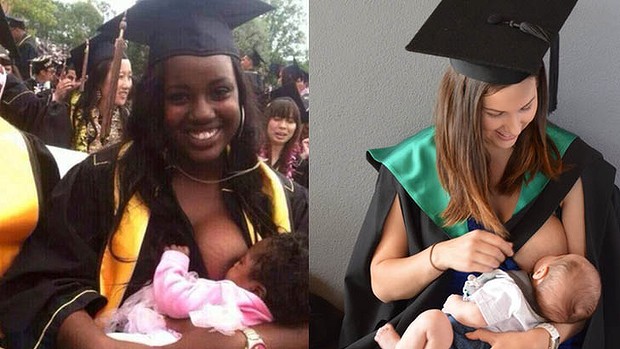 However, when we talk about blackbirds, the bird that springs to mind is likely the Common blackbird, a species of true thrush from the Turdidae family. There are many similar looking blackbirds in the Icteridae family, including the common North American Red-winged blackbird, but they’re barely related to their European counterparts!
However, when we talk about blackbirds, the bird that springs to mind is likely the Common blackbird, a species of true thrush from the Turdidae family. There are many similar looking blackbirds in the Icteridae family, including the common North American Red-winged blackbird, but they’re barely related to their European counterparts!
Blackbirds are a common garden bird throughout much of the world, but what about baby blackbirds? This is a guide to baby blackbirds. Of course, there will be plenty of pictures of baby blackbirds along the way!
What does a baby blackbird look like?
At birth
Baby blackbirds are born altricial and naked with spare tufts of downy feathers. The birds are blind and tiny, measuring just a few centimetres long. They’re capable of squirming but can’t shuffle around the nest for a couple of days at least. Baby blackbirds have gaping yellow mouths, which they present to their parents to feed.
Recently hatched blackbird chick in the nest
Three young blackbird chicks
Growth and development
Baby blackbirds grow exceptionally quickly, obtaining around 50 to 60% of their adult body weight in the first ten days. Fluffy, downy feathers begin to grow after a couple of days, giving a 7-day-old nestling blackbird a somewhat round or rotund appearance.
Fluffy, downy feathers begin to grow after a couple of days, giving a 7-day-old nestling blackbird a somewhat round or rotund appearance.
After 12 to 14 days, the chicks are ready to fledge, but they can feasibly survive outside of the nest after just nine days. Blackbirds remain juveniles for some eight months and will usually breed in the forthcoming breeding season.
How big are baby blackbirds?
Baby blackbirds are tiny, measuring just a few centimetres long, and they weigh just 2 to 4 grams.
Like most songbirds, baby blackbirds are born altricial, meaning they’re totally blind and are largely undeveloped. Hatchling birds require constant attention and can barely thermoregulate for 2 to 3 days. But, of course, young blackbirds grow extremely quickly, and by the time it comes to fledge, baby blackbirds obtain some 50 to 60% of their adult body weight.
Hungry blackbird chicks in the nest
How much do baby blackbirds weigh?
Baby blackbirds weigh around 2. 75 to 3.25g at birth, which is less than a 5p piece.
75 to 3.25g at birth, which is less than a 5p piece.
At birth, nestlings weigh less than 5% of their adult weight, which is around 100g. Baby blackbirds grow rapidly, and reach approximately 3/4 of their adult weight before fledging.
What do juvenile blackbirds look like?
Juvenile blackbirds are a medium-light, speckled brown with a reddish tinge to their breast and undersides. They’re easy to confuse with many other juvenile songbird juveniles.
Moreover, both the male and female look similar for the first eight months or so, until the males moult their juvenile brown plumage and replace it with black plumage. Female adult blackbirds can be hard to tell apart from juveniles as they share similar red-brown plumage.
Juvenile blackbirds are rounder and puffier than adults. Their downy feathers are gradually replaced over the course of 6 to 10 months.
Juvenile Blackbird
What is a baby blackbird called?
There’s no specific name for a baby blackbird. Like most baby birds, baby blackbirds are generally referred to simply as chicks.
Like most baby birds, baby blackbirds are generally referred to simply as chicks.
Like with other birds, there are also different names for different stages of the young blackbird’s development. Immediately after hatching, a baby blackbird is called a hatchling.
While baby blackbirds remain in the nest, they’re called nestlings. Once they leave the nest, they’re called fledglings. Finally, baby blackbirds become juveniles and then adult birds.
What do baby blackbirds eat?
Baby blackbirds eat what foods their parents bring them, which are almost exclusively soft invertebrates, insects and arthropods. While blackbirds are omnivores, young birds are unable to digest most seeds and berries until they fledge. Insects provide the high-fat, high-energy diet the young birds need to grow.
Parents feed the young a variety of worms, beetles, grasshoppers, flies and spiders, which are sometimes partially regurgitated and inserted into the chicks’ gaping mouths. The parents feed the chicks multiple times an hour for most of the day.
The parents feed the chicks multiple times an hour for most of the day.
Female Blackbird feeding chicks a worm in the nest
Do both parents feed baby blackbirds?
Both the male and female blackbirds feed the young birds. In some situations, the female will feed more, and in others, the male will take over most of the feeding duties. This seems to vary from region to region and nest to nest.
Once the chicks fledge, the male will continue to feed them for another two to three weeks or so if possible, while the female prepares for the next brood. Blackbird pair bonds are strong and often last for life.
How do blackbirds feed their chicks?
Adult blackbirds feed their chicks by dropping whole foods into the youngs’ gaping mouths.
Arthropods and invertebrates make up most of the chick’s diet for the first week or so at least. The parents may partially regurgitate some foods into the chicks’ mouths.
Soft insects and invertebrates like worms are essential in the breeding season - these easily digestible foods are full of nutritious fat and energy.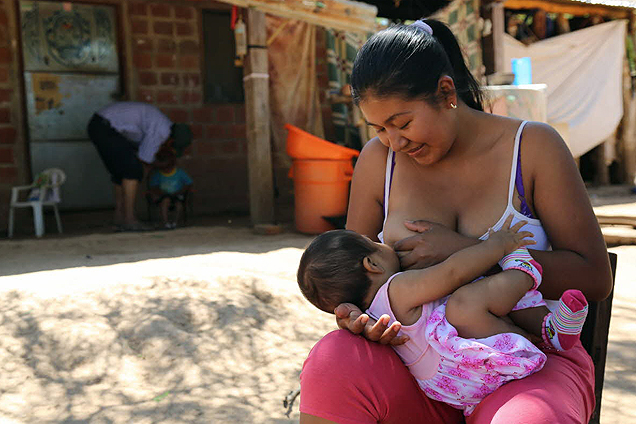
Male Blackbird looking after the chicks
What do blackbird eggs look like?
Blackbird eggs are pale-green or blue, with large brown-to-red speckles which cover most of the surface. They measure approximately 29 x 22mm.
Blackbird eggs in the nest
How long do blackbird eggs take to hatch?
Blackbird eggs are incubated for roughly 13 to 14 days on average, though longer incubations of 19 days have been observed in colder regions.
In the UK, the average incubation time is 13 to 14 days. It’s a similar story for most North American blackbirds - the average incubation time for Red-wing blackbirds is also around 13 days. The female usually incubates the eggs as the male guards the nest, but male incubation is occasionally observed too.
How many babies does a blackbird have?
A blackbird’s average clutch of eggs numbers 3 to 5 eggs, with higher numbers being laid in woodland habitats by older individuals.
Blackbird clutches wouldn’t be large enough to keep their population stable if they raised just one brood per year, hence why female blackbirds usually lay at least two clutches of eggs a year, if not three or even four!
Blackbirds live short lives, and they’ve learned to breed and nest quickly to keep their populations high.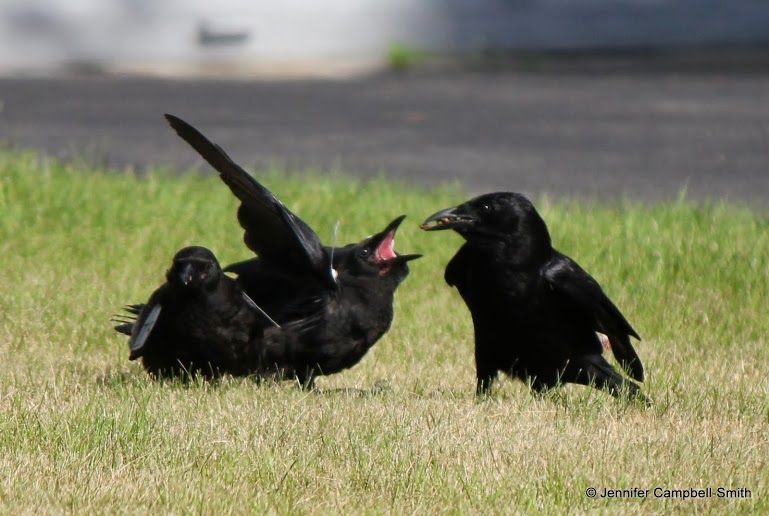 Over 50% of nests fail in some regions, so blackbirds must try, try again if they don’t first succeed!
Over 50% of nests fail in some regions, so blackbirds must try, try again if they don’t first succeed!
A fledgling common blackbird calling to be fed
When do blackbirds lay eggs?
In the UK, blackbirds lay eggs in the traditional spring breeding season, which runs from March until July.
Depending on the weather, most blackbirds will wait until April to lay their first clutch. Subsequent clutches are laid through May, June and July. Rarely, blackbirds may lay a late clutch in August.
In North America, the breeding season is pretty much the same as it is in the UK. Blackbirds in Canada and the northernmost US states typically wait until late April or May, whereas those distributed further south often breed earlier.
Eurasian Blackbird feeding a recently fledged chick a strawberry
How long do baby blackbirds stay with their parents?
Baby blackbirds leave the nest to fledge after around 12 to 14 days, but may leave sooner, after just nine days.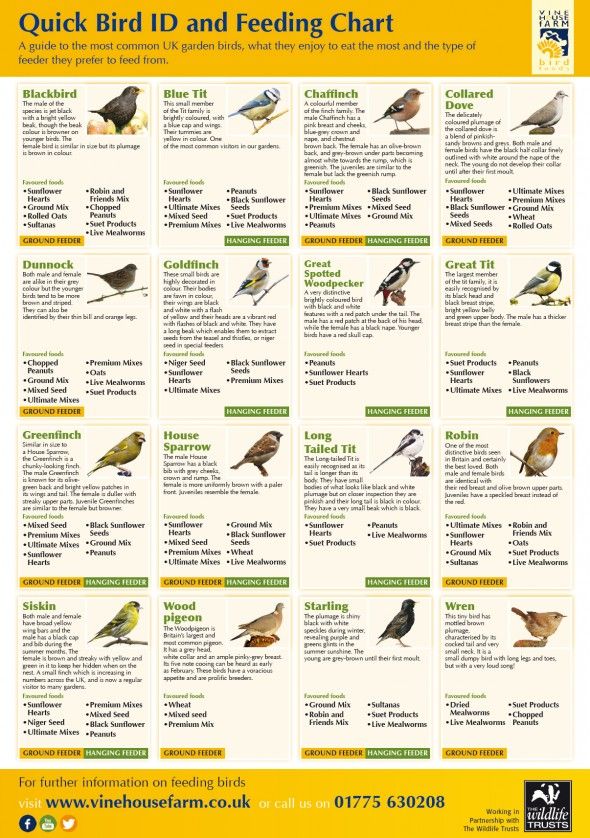 This is only likely if the nest is disturbed.
This is only likely if the nest is disturbed.
After fledging, the young birds usually shuffle their way to a nearby branch or bush, where they’ll remain for another week or so until they can fly confidently. Parental feeding can continue for as long as three weeks in some situations. During this time, the young blackbirds are often seen chasing after their parents and begging for food.
Expert Q + A
Ask a question
Do you have a question about this topic that we haven't answered? Submit it below, and one of our experts will answer as soon as they can.
How to feed a thrush chick?
Hello! My name is Svetlana. It so happened that last night on the playground I won a thrush chick from the kids. These offspring found a chick on the site, they could not say the exact place, it is only known that there were two chicks, one died with the second they were running around like a hand-written sack. I tried to send him to the Scriabin Veterinary Academy (fortunately we live nearby), but they said: “Sorry, we can’t accept.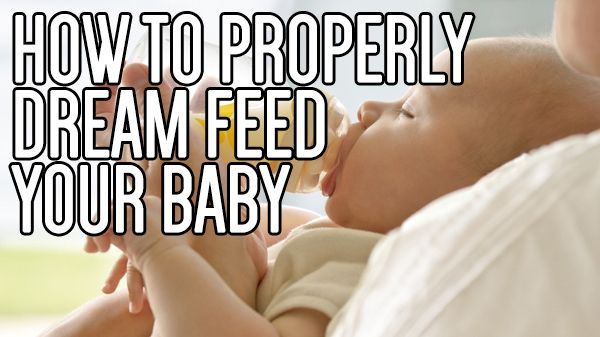 We don't have shelter! So this chick ended up at our house. nine0003
We don't have shelter! So this chick ended up at our house. nine0003
I had to google and ask Yandex what and how. First... There are a lot of cats in our district, so the question of leaving a bird on the street was dismissed immediately, and even these kids, in general, this is definitely death for a bird.
General information is clear, but questions remain.
Settled temporarily in a cat carrier (plastic). Last night they fed the bird with a mass of boiled hard-boiled eggs with water and bread crumbs (two-day bread), gave food from a syringe. Spent the night well. Today he began to chirp at about six in the morning, again fed from a syringe, baby meat puree with water and corn porridge. Shredded carrots. Then we quickly went to the veterinary store and bought food for insectivorous birds ‘padovanes’, flour worms and maggots. It bursts on both cheeks 🙂 I give worms and maggots with tweezers right into the beak, with food it is more difficult to mix it with water and the same corn baby gruel in order to roll up something similar to worms. Swallows with pleasure. nine0003
Swallows with pleasure. nine0003
More questions.
One. Today, some kind of flakes are falling from the feathers of the bird, they look like dandruff, what should I do about it? Is it possible to process a bird with something ?, we have children in our apartment. Some kind of powder, or miramistin, or something that won't harm the bird.
Two. While Google was reading about a similar situation, there the girl of the thrush was fattened with antibiotics (ciprofloxacin), enterol and hilak forts, but they had a bird that was injured. In our case, is it advisable to give antibiotics? And also, is it necessary to give immunofan or foskrenil? Even today, the chick has on its beak, more precisely along the edges, as if it was traumatized or something, how to process it? nine0003
Three. How often should you feed? Feed at night? Do birds need to be given water? How to teach self-feeding. Because, apparently, the bird will stay at home. And is it even worth it? Or still entrust ornithologists with this concern? True, it seems to me that the bird has already got used to me. 🙁
🙁
I'll add photos of a bird to the paperclip when they brought home and today's one with dandruff and an injured beak.
Good afternoon!
First, let's talk about mistakes - you should not feed thrush chicks with bread and porridge. So you can eventually kill the bird. If there are no ticks, then you don’t need to process it, but the fact that the feather grows and covers from feathers falls from it is okay, it’s physiological. You can feed with a mixture for insectivorous birds and crickets, cockroaches and mealworms (a little of it). A mixture for insectivorous birds can be made by yourself - this is a hard-boiled egg, grated carrots, cottage cheese, hamarus .. Of the preparations, immunim is best suited, which is drunk with water (literally drop by drop). As for the feeding regimen, feed as requested, and of course you don’t need to feed at night - the chicks also sleep at night ...
Yours faithfully, the chief veterinarian of the bird hospital PhD Romanov VV
recommendations for feeding and keeping
Thrushes are insectivorous birds.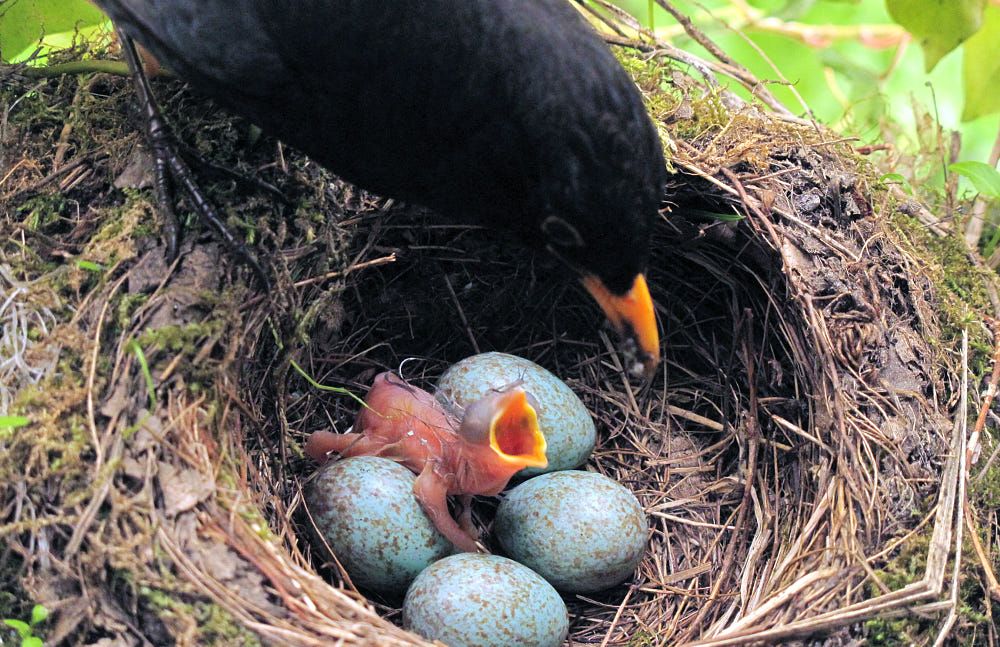 Nests are built mainly in a young mixed or coniferous sparse forest with dense undergrowth near water and fields. Their "dwelling" is bowl-shaped, collected from grass stalks, small branches, moss, sealed with saliva. It is located on a tree, and not high from the ground.
Nests are built mainly in a young mixed or coniferous sparse forest with dense undergrowth near water and fields. Their "dwelling" is bowl-shaped, collected from grass stalks, small branches, moss, sealed with saliva. It is located on a tree, and not high from the ground.
Both parents incubate the clutch. Birds feed mainly on the ground, looking for insects in the forest floor. They are also heated to plumage together. Thrushes bring several insects to their chicks on average 4 times per hour. Food is collected near the nest, at a distance of no more than 200 m.
You will have to forget about peace for some time if somehow (picked up, specially taken to raise a singing bird, someone threw it in) a thrush chick got to you. The photo shows the baby well. You need to immediately decide what you will do with him: leave him to live in the house or release him into the wild. It should be noted that if the chick is very small (it has fluff on its head), and you pick it up, then an adult bird will be completely tame.
Brood birds: specific features of development and...
There are various classifications of birds based on a variety of characteristics. One of the...
The main difficulty in raising a baby is to provide him with warmth. Thrush chick should be kept in captivity at a temperature of about 40 about C. To do this, you need to make a simple thermostat. You can use a plywood box, and it is preferable to make a small wall at the bottom, and the opposite will be a lid. At the bottom of the sidewall, strengthen the cartridge and screw in the light bulb. Fill it with sand 5 cm and install a nest. It can be built from rags or found natural. It is unacceptable to use cotton wool, as the thrush chick will get entangled in it. nine0003
To be sure that overheating from the light bulb does not occur, you will have to install an incandescent rheostat or a thermometer on the surface of the sand. In the first version, the light bulb can not be turned off, and in the second one, you will have to periodically monitor the readings and turn it off when heated to 41 about C. A fledgling thrush chick will not tolerate overheating, as well as hypothermia, it will die. Fledgling birds do not need heating, they can live in a basket with a lid.
A fledgling thrush chick will not tolerate overheating, as well as hypothermia, it will die. Fledgling birds do not need heating, they can live in a basket with a lid.
Song thrush: specific features of the voice
The song thrush belongs to one of the largest bird populations. It became known to the townspeople and...
he will need time to adapt. It is better to feed babies found outside their natural habitation immediately, because it is not known how long they are starving. Relatively large cubs have to be forced to eat, they do not open their mouths voluntarily. Food must be pushed further down the throat, otherwise it will be spit out. Before force-feeding, you can resort to tricks - knock on the basket or move it. This will improvise the arrival of the mother, and perhaps the thrush chick will open its mouth. Usually, when hungry, he makes sounds, demanding food. It must be given as soon as possible. Babies get used to people quickly, after the 3rd feeding they themselves open their mouths wide. nine0003
The question arises as to what to feed the thrush chick. Given that these birds are insectivorous, the answer suggests itself: flies, moths, zofobas, etc. Feeds for insectivores with a low content of iron and vitamin C can be used, because. they accumulate in the liver and adversely affect development. It is recommended to give him egg white, boiled potatoes and corn, apples, melons, berries, banana, pear, yogurt. Raisins, grapes, kiwi, strawberries, citrus fruits, green vegetables, tomatoes, egg yolk, red meat, liver are contraindicated. nine0003
What do thrush eggs look like? The amazing color of these eggs ...
General useful information on each type of thrush will help you better imagine their life. And the eggs...
Thrush chick is voracious, you need to feed it every hour, in extreme cases - two. You can use tweezers with blunt ends. Before going to bed, it is advisable to place a basket with a chick near the bed in order to hear a squeak indicating the need for feeding.